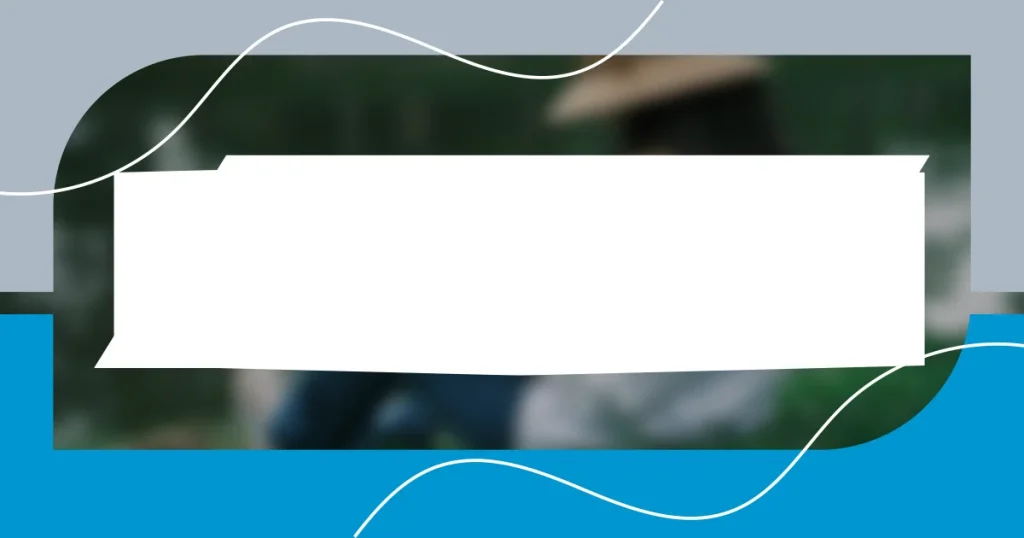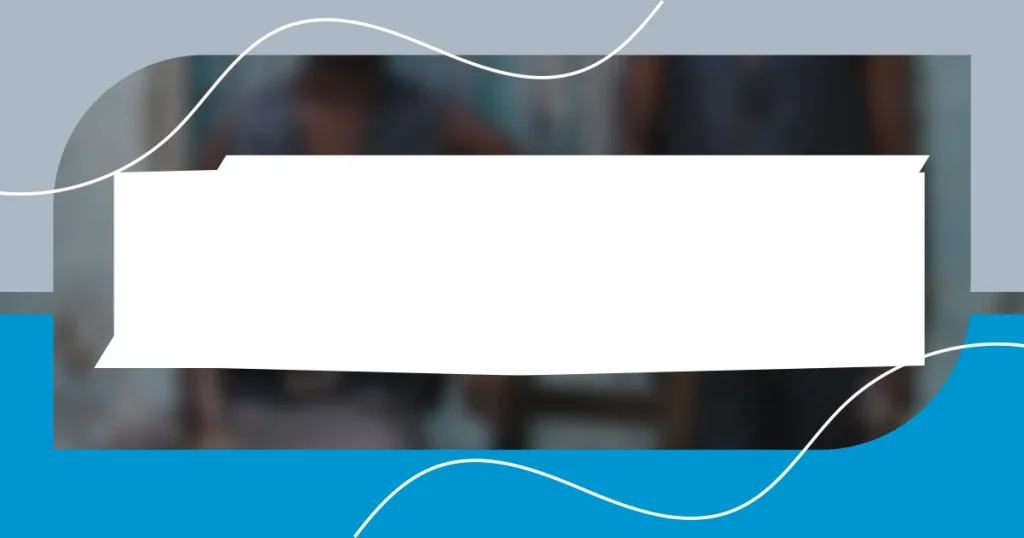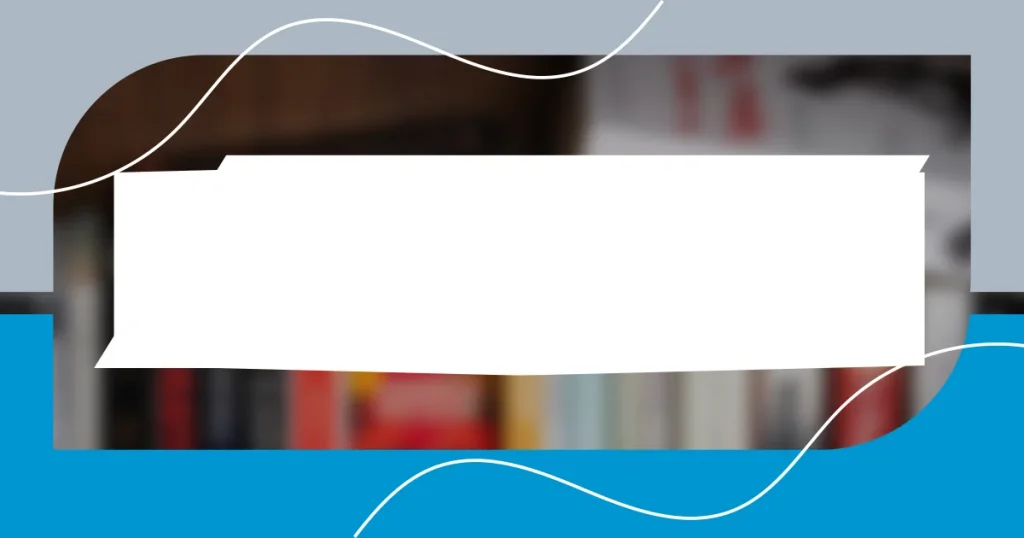Key takeaways:
- The book emphasizes the importance of mindset shifts in financial management, highlighting the transition from scarcity to abundance as key to better decisions.
- Practical applications like budgeting, setting financial goals, and automating savings and payments are shown to empower individuals and improve financial health.
- The critique suggests incorporating real-life examples, interactive budgeting tools, and a focus on emotional intelligence to enhance relatability and engagement with financial concepts.

Understanding the book’s premise
When I first approached the book, I felt both excitement and skepticism. The premise presented itself as a revolutionary path to financial freedom, but I wondered, can one book truly reshape our understanding of money? As I delved deeper, I realized that the author was aiming to challenge conventional wisdom, and I found myself nodding along to some ideas while raising an eyebrow at others.
One idea that struck me was the emphasis on mindset over mechanics. I couldn’t help but reflect on my own financial journey—shifting from a scarcity mentality to one of abundance opened up so many possibilities. It led me to question whether this shift was the key to unlocking better financial decisions, not just formulas and budgets.
Reading through the chapters, I kept asking myself how the book’s core message resonated with my experiences. The more I analyzed the author’s arguments, the more I identified parallels to my own struggles with money. It’s a journey of self-discovery, and understanding the book’s premise feels like a conversation between the author and my own financial awakening.
Identifying key financial concepts
As I explored the chapters, several key financial concepts jumped out at me. One that stood out was the importance of budgeting not just as a task, but as a tool for empowerment. Reflecting on my habit of tracking expenses, I realized how empowering it felt to see where every dollar was going. It shifted my perspective from merely surviving financially to actively engaging with my resources.
In addition to budgeting, the book stressed the concept of compound interest—a topic that always intrigued me. I remember learning about it in my early twenties, and honestly, it blew my mind. The idea that money could essentially work for me was a game-changer. It made me consider how small, consistent investments today can lead to significant wealth tomorrow.
Moreover, I found the discussion around debt particularly resonant. The author advocated for viewing debt as a tool rather than a burden, which struck a chord with me. I’ve had periods in my life where I felt trapped by debt, but redefining it as a means to invest in my education or a business venture transformed my attitude. It’s a refreshing perspective that invites us to think differently about our financial choices.
| Financial Concept | Personal Experience |
|---|---|
| Budgeting | Tracking my expenses shifted my view from surviving to thriving financially. |
| Compound Interest | Learning about it helped me see the long-term potential of my investments. |
| Debt as a Tool | Reframing debt allowed me to approach my finances with a more positive mindset. |

Analyzing the author’s arguments
While analyzing the author’s arguments, I found several points that intrigued me and also made me pause for thought. For instance, the assertion that financial literacy isn’t just about numbers but about understanding emotional triggers really resonated. I remember a time when I would make impulsive purchases whenever I was feeling low. It was only when I acknowledged those emotions that I began to make more mindful financial choices. This idea of intertwining emotion with numbers was a refreshing take that added depth to the author’s viewpoint.
- The importance of emotional awareness in financial decisions.
- Acknowledging my spending triggers transformed how I managed my money.
- Relationships between feelings and money can lead to better financial health.
Furthermore, the author’s argument that automation can significantly improve financial habits struck me as both practical and transformative. I used to get overwhelmed by managing bills and savings, often forgetting to set aside money or pay on time. After I automated my savings and payments, it felt like I handed over a weighty burden. Suddenly, my financial health wasn’t a constant source of anxiety; it became something I could manage with little effort. Seeing how automation can be an ally in achieving financial goals encapsulated the author’s message beautifully.
- Automation simplifies financial management and reduces stress.
- I experienced a dramatic improvement in my financial routine through automation.
- The author’s perspective highlights the value of systems in personal finance.
Evaluating practical applications
Evaluating the practical applications of the financial concepts presented in the book made me reflect deeply on my own money management strategies. One striking example was the emphasis on creating a spending plan. I remember when I first started using envelopes to allocate my budget—each represented a specific category like groceries or entertainment. This method didn’t just help me stick to my budget; it added an element of control and satisfaction that I hadn’t anticipated. Have you ever felt that rush when you stay within budget?
Diving further, I was particularly fascinated by the idea of setting financial goals. The author insisted on defining short-term and long-term goals to shape financial behavior. I distinctly recall setting a goal to save for a vacation. Every time I put a little extra into that fund, it fueled my excitement. It’s all about creating milestones that keep you motivated, right? It’s a constant reminder that saving isn’t a sacrifice—it’s an investment in experiences that enrich your life.
Moreover, the book highlighted the importance of revisiting and adjusting goals as circumstances change. I find this concept crucial, as life is ever-changing. Reflecting on my own journey, I’ve adjusted my financial goals after significant life events, such as a new job or unexpected expenses. This adaptability is liberating, allowing me to feel in control during uncertain times. Does reassessing your goals regularly offer you the same sense of empowerment? For me, it transforms financial planning from a rigid process into a dynamic dialogue that evolves with my life.
Reflecting on personal insights
Reflecting on personal insights, I often find myself revisiting moments when financial concepts really clicked for me. One that stands out is when I started tracking my spending rigorously. Initially, it felt like a chore, but each month I felt a surge of empowerment as I gained visibility into my habits. Has a simple act ever transformed your perspective on something seemingly mundane? For me, this shift turned budgeting from a dreaded task into a powerful tool for self-awareness.
I also recall grappling with the concept of opportunity cost—the idea that every financial choice comes with a trade-off. Understanding this made me rethink my purchases. Once, I hesitated on buying a trendy gadget. Instead of jumping in, I asked myself what experiences or savings I might forgo. It was eye-opening to realize that sometimes, the joy of a financial decision lies in the alternatives we choose to embrace. Who knew that pausing to consider the bigger picture could be so liberating?
Another insight I cherish is the realization that financial conversations can be deeply personal and sometimes uncomfortable. When I finally opened up to friends about our budget struggles, I discovered many were in the same boat. It felt cathartic to share, and we even exchanged valuable tips that enriched our financial journeys. Have you ever found camaraderie in discussing your financial worries? I learned that vulnerability could lead to growth, transforming isolated struggles into shared victories.
Suggesting improvements or alternatives
When it comes to suggesting improvements or alternatives in a personal finance book, one area that often stands out for me is the inclusion of more real-life examples. While the concepts presented may be solid, I appreciate when authors weave in actual stories or testimonials from people who’ve successfully implemented these strategies. I remember sharing with my friend how a neighbor of ours tackled their debt by turning side hustles into a family project. Have you ever seen how collective efforts can spark creativity and motivation? Incorporating diverse experiences can really enhance relatability and inspiration.
Another recommendation I would propose involves a more interactive approach to budgeting tools. Sometimes, simply listing options feels daunting. I recall the moment I first encountered a budgeting app and how turning those budgeting envelopes into digital envelopes transformed my management style. It brought a gamified element to finance that kept me engaged. Wouldn’t it be interesting if the book included QR codes or links to companion tools? These resources could bridge the gap between theory and practice, making financial literacy more accessible and enjoyable.
Lastly, I believe a greater emphasis on emotional intelligence in financial decision-making would enrich the book’s content. I often find that my emotional state significantly impacts my choices—like when I impulsively bought a shiny new gadget after a rough week. Reflecting on that moment helped me realize that understanding my financial emotions can lead to better decisions. Wouldn’t it be powerful for readers to explore such feelings? Suggesting mindfulness practices or offering questions for self-reflection could empower readers to navigate their unique financial landscapes with greater confidence and awareness.
Concluding thoughts on the critique
Reflecting on my critique, I found it both rewarding and enlightening. It made me realize how integral personal stories are to understanding financial concepts. I recall how my grandmother always emphasized the importance of saving, yet she never shared her own missteps until I pressed her. Hearing her anecdotes humanized the numbers for me, showing that everyone has a journey, filled with both triumphs and challenges. Have you ever wished you could peek behind the curtain of someone’s financial experience? Having those real-life insights could deepen the reader’s connection to the material.
In addition, my critique highlighted the need for authors to confront the emotional dimensions of finance more directly. I remember a time when I splurged on a beautiful jacket after a particularly tough day. It felt like a treat in the moment, but later, I recognized it wasn’t just about the jacket. It was a coping mechanism for my stress. I couldn’t help but wonder—what if the book prompted readers to unpack those moments? Encouraging self-reflection can empower people to make choices that align with their true values.
Lastly, critiquing this book helped me appreciate the nuances of personal finance. I’ve seen firsthand how one-size-fits-all advice can fall flat. When I first budgeted, my approach was rigid and uninspired. It felt more like a punishment than a plan. Now, I adjust my budget based on what’s happening in my life, like when I decided to allocate funds for self-care after a rough period. What if the book offered customizable frameworks that account for life’s unpredictability? By inviting flexibility and adaptability, readers could feel more in control of their financial journeys.














